'Elegance Personified: a pair of Tang standing Bodhisattvas' at Christie's New York, 13 - 14 September
Elegantly outftted in the sumptuous trappings of an Indian prince of old, these compelling sculptures represent bodhisattvas 菩薩,1 benevolent beings who have attained enlightenment 菩提 but who have selfessly postponed entry into nirvana 涅槃 in order to assist other sentient beings—有情 or 眾生—in gaining enlightenment.2 Bodhisattvas are presented in the guise of an early Indian prince, a reference to Siddhartha Gautama’s worldly status before he became the Historical Buddha Shakyamuni 釋迦牟尼佛, implying that just as Siddhartha 喬達摩悉達多 (traditionally, c. 563–c. 483 BC), who was born a crown prince, became a Buddha 佛, so will bodhisattvas eventually become Buddhas, once all sentient b1eings have attained enlightenment.
Meaning “enlightened being”, a bodhisattva is an altruistic being who is dedicated to assisting other sentient beings in achieving release from the samsara cycle of birth and rebirth 輪迴 through the attainment of enlightenment; bodhisattvas thus embody the Mahayana Buddhist 大乘佛教 ideal of delivering all living creatures from sufering 普度眾生. Thanks to the enormous stores they have amassed, bodhisattvas are able to assist others through the transfer of meritorious karma to those in need, a concept known in Sanskrit as parinamana and in Chinese as huixiang 回向 or 迴向.
As evinced by these majestic sculptures, bodhisattvas generally are depicted with a single head, two arms, and two legs, though they in fact may be shown with multiple heads and limbs, depending upon the individual bodhisattva and the particular manifestation as described in the sutras 佛經, or sacred texts. Richly attired, bodhisattvas, who may be presented either standing or seated, are represented with long hair often arranged in a tall coifure, or bun, atop the head and often with long strands of hair cascading over the shoulders, as seen in these sculptures. Though not present here, a crown sometimes surrounds the high topknot. Bodhisattvas wear ornamental scarves, dhotis of rich silk brocade, and a wealth of jewelry that typically includes necklaces, armlets, bracelets, and anklets. Each of these fgures wears a scarf, a necklace, and armlets, for example, and one of them wears a string of beads that encircles the waist, falls to the knees in two broad ellipses, and then loops around to the fgure’s back. Like Buddhas, bodhisattvas have distended earlobes; some wear earrings, others do not. Though bodhisattvas generally are shown barefoot, as in these sculptures, both early Indian and early Chinese images of bodhisattvas may be shown wearing sandals, often of plaited straw.3
These sculptures represent two specifc bodhisattvas, Avalokiteshvara, the bodhisattva of compassion—who is known in Chinese as Guanshiyin Pusa 觀世音菩薩, or more simply as Guanyin Pusa 觀音菩薩—and Mahasthamaprapta, the bodhisattva of the power of wisdom, who is known in Chinese as Dashizhi Pusa 大勢至菩薩. By Tang times 唐時代 (618–907) these two bodhisattvas typically were presented as a pair and in association with the Buddha Amitabha 阿彌陀佛. (Fig. 1) In fact, Guanyin is regarded as a spiritual emanation of Amitabha and is identifed by the small representation of Amitabha that appears in the bodhisattva’s crown or, in this instance, at the front of the tall topknot of hair. The vase that the bodhisattva holds in the lowered left hand—the vase possibly originally a kundika 淨甁, or sprinkler for dispensing holy water in purifcation rituals—also fgures among the iconographic symbols associated with Guanyin. The covered jar—in other instances a long-necked water bottle 水瓶—at the front of the tall bun of hair symbolizes wisdom and identifes the other bodhisattva as Dashizhi. Emerging from the mouth of a makara (variously transliterated as 摩伽羅, 摩竭羅, and 摩迦羅) that incongruously springs from the bodhisattva’s hip, two stems of a lotus plant rise up Dashizhi’s right arm, one supporting a leaf, discernable in profle at the elbow, and the other a small lotus bud, visible at the shoulder. 4
Fig. 1 Limestone Stele with the bodhisattvas Avalokiteshvara (Guanyin) and Mahasthamaprapta (Dashizi), Tang dynasty, mid-late 7th century. Rogers Fund, 1930. The Metropolitan Museum of Art Collection.
A translation of the Sanskrit name Avalokiteshvara, Guanshiyin means “[The One Who] Perceives the Sounds of the World”, a reference to Guanyin’s ability to hear both the cries of the aflicted and the prayers of supplicants. An earthly manifestation of the Buddha Amitabha, Guanyin guards the world in the interval between the departure of the Historical Buddha Shakyamuni and the appearance of Maitreya 彌勒, the Buddha of the Future. The Lotus Sutra—known in Sanskrit as the Saddharma Pundarika Sutra and in Chinese as the Miaofa Lianhua Jing 妙法蓮華經—is generally accepted as the earliest sacred text that presents the doctrines of Avalokiteshvara, that presentation occurring in Chapter 25. Titled Guanshiyin Pusa Pumenpin 觀世音菩薩普門品 and devoted to Guanyin, that chapter describes Guanyin as a compassionate bodhisattva who hears the cries of sentient beings and who works tirelessly to help all those who call upon his name. Thirty-three diferent manifestations of the bodhisattva are described, including female manifestations as well as ones with multiple heads and multiple limbs. This chapter has long circulated independently as stand-alone sutra called the Avalokiteshvara Sutra, or Guanshiyin Jing 觀世音經 in Chinese, and is commonly recited or chanted at Buddhist temples in East Asia.
Mahasthamaprapta, or Dashizhi 大勢至菩薩 in Chinese, literally means “arrival of great strength” and represents the power of wisdom. This bodhisattva awakens in humans their need to be liberated from the samsara cycle of birth and rebirth 輪迴. In the pairing of the two bodhisattvas with Amitabha to form an Amitabha Triad 阿彌陀三尊, Guanyin enacts Amitabha’s compassion, and Mahasthamaprapta brings to humanity the power of Amitabha’s wisdom. Among the earliest of the bodhisattvas described in the sacred texts, Dashizhi is also viewed as a protector of the Buddha and of the dharma 法, or canon of Buddhist teachings. In the Shurangama Sutra, known in Chinese as Dafoding Shoulengyan Jing 大佛頂首楞嚴經, Dashizhi recounts that he gained enlightenment through meditation and through the practice of Buddha recitation, thus underscoring the merit both of meditation and of chanting sutras during Buddhist worship.
Although appearing in early Mahayana sutras, Dashizhi was seldom worshiped or represented in India but played an important role in Mahayana Buddhism as practiced in East Asia. Apart from the Shurangama Sutra, Dashizhi is also introduced in the Infnite Life Sutra—known as the Sukhavativyuha Sutra in Sanskrit and as the Wuliangshou Jing 無量壽經 in Chinese—and in the Sutra of Meditation on the Bodhisattva Universal Virtue, or Samantabhadra Meditation Sutra, known in Chinese as the Guan Puxian Pusa Xingfa Jing 觀普賢菩薩行法經, which is included in the Lotus Sutra as Chapter 28 but is regarded as an epilogue to that sutra.
Originally set on a temple altar, these two sculptures would have appeared on either side of a Buddha, forming a triad 三尊. (Fig. 2) The Buddha, which could have been either standing or seated, likely would have been Amitabha. Though Guanyin typically appeared to the left, and Dashizhi to the right, of the central Buddha image, the placement occasionally was switched, so it is impossible
to know which of these two sculptures originally stood to the right, and which to the left, of the central image. The altar group might have included additional fgures, hierarchically scaled and symmetrically arranged. A monk or disciple might have been tucked between the Buddha and each bodhisattva, for example, just as a guardian fgure might have appeared at each outer edge of the assemblage. Akin to angels, celestial fgures termed apsaras 飛天 possibly hovered above, venerating the Buddha, playing musical instruments, or making oferings of alms or fowers.
Fig. 2 Detail of the reverse side of fg. 1 showing bodhisattvas Avalokiteshvara (Guanyin) and Mahasthamaprapta (Dashizi) fanking the Buddha Amitabha.
Dated by inscription to 566, a small stone triad from the Northern Zhou period 北周時代 (557–581) and exhibited in 2017 by J.J. Lally & Co., New York, shows how a grouping of three fgures might originally have been arranged,5 as does a late seventh- or early eighth-century gilt bronze triad in the collection of the Freer Gallery of Art, Washington, DC (F1914.21),6 and as do three early eighth-century stone relief carvings formerly in the collection of the Japanese art dealer Hayasaki Kōichi 早崎孝一 (1874–1956), each of which depicts a triad with Guanyin and Dashizhi standing on either side of a Buddha. 7 (Fig. 3). A Sui-dynasty 隋朝 (581–618) bronze altarpiece in the Museum of Fine Arts, Boston (22.407),8 reveals how the fgures might have been composed if the group included more than three fgures, as does a Sui or early Tang, gilt bronze altarpiece in the Asian Art Museum, San Francisco (B60 B8+). 9
Fig. 3 Gilt-bronze Buddhist altarpiece, Sui dynasty, AD 597. The Freer|Sackler Collection, F1914.21a-h. Image © the Freer|Sackler.
Buddhist scriptures speak of countless bodhisattvas, a few of whom are named and coupled with specifc virtues. Best known and most frequently worshiped is the Bodhisattva Guanyin who is revered as the Bodhisattva of Compassion. Likely the second most worshiped bodhisattva is Maitreya, or Mile Pusa 彌勒菩薩 in Chinese, the Buddha of the Future, who is shown both as a bodhisattva, when residing in the Tushita Heaven 兜率天, where all bodhisattvas currently reside, and also as a Buddha, when preaching in his Ketumati Paradise (雞頭 摩 or 翅頭末), after having descended to earth from the Tushita Heaven and achieved Buddhahood.
Although they may be presented individually, bodhisattvas generally are presented in pairs and associated with particular Buddhas, in which case the three are featured together in triad form 三尊. Thus, Bodhisattvas Guanyin and Dashizhi generally appear on either side of the Buddha Amitabha, while Bodhisattvas Manjushri 文殊菩薩, the Bodhisattva of Transcendental Wisdom, and Samantabhadra 普賢菩薩—Wenshu and Puxian in Chinese—typically fank the Historical Buddha Shakyamuni. In like manner Bodhisattvas Suryaprabha 日光菩薩 and Candraprabha 月光菩薩—Riguang and Yueguang in Chinese—stand to the left and right of the Medicine Buddha 藥師佛.
Named bodhisattvas characteristically possess an identifying iconographic attribute. A spiritual emanation of the Buddha Amitabha, Guanyin is identifed by the small image of Amitabha that appears at the front of the bodhisattva’s crown or coifure. As symbolic attribute, Dashizhi claims either a jar or a longnecked bottle, the vessel appearing at the front of the topknot or crown. Both Guanyin and Dashizhi may hold a lotus bud or blossom; if so, Guanyin usually holds it in the left hand, the fower typically appearing at the left shoulder, while Dashizhi holds it in the right hand. The small stupa 偷婆 or pagoda 塔that appears at the front of his chignon or headdress identifes the Bodhisattva Maitreya (Mile); the symbol emblemizes the repository in which the Buddha Shakyamuni’s relics were interred, thus frmly associating Maitreya with Shakyamuni and identifying him as the Buddha of the Future who will succeed Shakyamuni as the next earthly Buddha. As the bodhisattva of transcendental wisdom, Manjushri (Wenshu) possesses a book, sometimes held in his hands but often shown resting on a lotus blossom at the fgure’s left shoulder; he sometimes also holds a sword with which to combat evil. As the “Sunlight” and “Moonlight” bodhisattvas, Suryaprabha and Candraprabha (Riguang and Yueguang) sport a sun disc and a crescent moon, respectively, in their coifures as iconographic emblems.
Though typically depicted with one head, two arms, and two legs, bodhisattvas,as described in the scriptures, sometimes have variant forms with multiple heads and numerous limbs. One variant form of Guanyin has eleven heads 十一面觀音菩薩, for example while another, possesses 500 heads, 1,000 hands, and 1,000 eyes 千手千眼觀音. A deity’s multiple heads and limbs indicate that the deity has the ability to assist more beings than can a deity with but one head, two arms and two legs. In the case of the Eleven-Headed Avalokiteshvara, after struggling to comprehend the needs of so many in distress, the bodhisattva’s head split into eleven pieces. According to the sutras, upon seeing his spiritual emanation’s plight, the Buddha Amitabha granted Avalokiteshvara eleven heads to help him hear the cries of those who are sufering. Upon hearing and comprehending those cries, Avalokiteshvara attempted to reach out to all those needing help but found that his two arms shattered into pieces. Once more coming to his rescue, Amitabha gave him a thousand arms to reach out to those in need.
Bodhisattvas often hold a lotus blossom, a universal symbol of Buddhism and an appropriate ofering for presentation to a Buddha. When holding a longstemmed lotus with the blossom itself appearing near the fgure’s left shoulder, Guanyin is known as Padmapani 波頭摩巴尼, or “He Who Holds the Lotus”. In other instances, Guanyin might hold a fy whisk 秉拂, an ancient Indian symbol representing the “sweeping away” of ignorance and mental aflictions. Avalokiteshvara, Maitreya, and other bodhisattvas sometimes also hold a vase, a kundika, or a small jar flled with holy water. 10 This pair of sculptures portrays Guanyin with a vase, or kundika, and Dashizhi with a lotus bud at the right shoulder and a lotus leaf at the right elbow.
Like virtually all early Buddhist sculptures of stone and wood, these two bodhisattvas originally would have been embellished with brightly colored mineral pigments, the colors likely including safron, blues, and greens for the robes and scarves, gilding for the jewelry, pink or white for the fesh, and black, or possibly blue, for the hair. Indeed, these sculptures retain traces of gilding and of the gesso ground on which the pigments were applied. (White in color, gesso was applied to smooth the stone surface and to render it chalk-white so that pigments appear to best advantage in terms of color and clarity.) The Buddhist sculptures in the Mogao grottoes at Dunhuang, Gansu province 甘肃省敦煌莫高窟, retain the greatest amount of original pigment of all early Chinese sculptures, but other Buddhist stone sculptures from the Tang and earlier periods often exhibit traces of original pigment, as well, such as the pair of Tang bodhisattvas exhibited at J.J. Lally & Co., New York, in 2017, 11 and such as three sculptures in the collection of the Harvard Art Museums: a Northern Qi- 北齊 or Sui-dynasty Seated Buddha in white marble (1943.53.42),12 a Sui Standing Guanyin in gray limestone (1943.53.43),13 and a Tang kneeling Bodhisattva in gray limestone (1943.53.36).14
When under worship in a temple, each sculpture in the triad would have been backed by either a halo or a mandorla 背光, the lotus-petal-shaped aureole 光環 suggesting light radiating from the deity’s body and thus signaling its divine status. (Symbolizing divinity, a halo is a circle, or disc, of light that appears behind the head of a deity; a mandorla is a full-body halo.) That each fgure lacks a tenon between the shoulder blades or at the back of the head to receive a sculpted mandorla suggests that the aureoles were painted on the wall behind the fgures. Such integration of painting and sculpture was a characteristic feature of traditional Buddhist temples. The aureoles likely incorporated foral designs arranged in a scrolling arabesque, perhaps with an open lotus blossom featured en face directly behind each fgure’s head.
In the standard style of the eighth century, the integrally carved bases comprise four parts: a circular plinth at the very bottom on which rests an inverted lotus blossom with well-modeled petals and from which rises a short, cylindrical shaft embellished with eight spherical lobes, which supports the upright, fattened lotus blossom on whose seed pod the bodhisattva stands. The eight spherical lobes symbolically refer to the Buddha’s Eight-Fold Path, the route to enlightenment that the Buddha taught. Related bases support the pair of Tang bodhisattvas that J.J. Lally & Co., exhibited in 2017,15 the Tang-dynasty stone sculpture of Bodhisattva Ksitigarbha (Chinese, Dizang Pusa 地藏菩薩) in the Eisei Bunko Museum, Tokyo 東京永青文庫,16 the Tang stone sculpture of a kneeling Bodhisattva in the Harvard Art Museums (1943.53.36),17 and two Tang stone sculptures representing standing bodhisattvas in the collection of the University of Pennsylvania Museum, Philadelphia (C111 and C112).18 Interestingly, among the bases closest to those of the present bodhisattvas is that of a Tang Daoist sculpture representing a Seated Laozi 老子, which features the same spherical lobes around the shaft connecting the upper and lower lotus blossoms;19 the similarity serves as a reminder that the same sculptors and workshops produced sculptures for both Buddhist and Daoist temples, so the styles often are closely related.
These majestic sculptures date to the Tang dynasty, likely to the early eighth century, as indicated by the elegant presentation and naturalistic modeling, which are hallmarks of the Tang style and which are most evident in the fgures’ graceful tribhanga 三屈, or “thrice-bent”, poses that impart an S-curve to the bodies and thus imply the possibility of movement, imbuing the fgures with life. The feshy necks, each with three strongly articulated folds, and the well-modelled faces with plump cheeks point to an early eighth-century date of creation, as do the bulging, downcast eyes set under heavy lids, within deep sockets, and under brows created by the sharp intersection of eye socket and forehead planes. With their bow-shaped upper lips and “bee-stung” lower lips, the small, slightly pursed mouths are also characteristic of the early eighth-century style, as are the cleft chins and the dimples that frame each mouth. The meticulously coifed hair, arranged with a high chignon and delicately combed locks on either side of a central part, also refects the Tang taste for naturalistic detail. Falling gracefully in long, elliptical folds over the lower portion of each body, the sheer drapery clings suficiently tightly to reveal not only the presence of the body but also its structure, another feature typical of the early eighth-century style. And the S-curve pose causes Guanyin’s long, double chain of pearls to fall asymmetrically, further implying the possibility of motion, a characteristic feature of eighth-century sculptures.
Though carved in the round and fnished in the back, these magnifcent bodhisattvas’ closest counterparts are the bodhisattvas that fank a Maitreya Buddha in a low-relief triad set within a niche (石造浮彫弥勒三尊仏龕) in a limestone architectural relief from the Qibaotai 七寶台, or “Tower of Seven Treasures”, which originally was part of the Guangzhai Monastery 光宅寺 in ancient Chang’an 長安, the Tang capital (modern Xi’an 西安). Now in the collection of the Tokyo National Museum 東京國立博物館 (TC-718), that relief is datable to 704.20 These sculptures also relate in style to other limestone architectural-relief sculptures from the Qibaotai, such as the Eleven-Headed Guanyin now in the collection of the Freer Gallery of Art, Washington, DC (F1909.98), which is datable to 703.21 (Fig. 4) They also are closely akin to a sandstone relief sculpture of a standing bodhisattva from Cave 14 of the Buddhist grottoes at Tianlongshan, near Taiyuan, Shanxi province 山西省太原市天龍山石窟; believed to date c. 700, that sculpture now is in the collection of the Museum Rietberg, Zürich, Switzerland (RCH 134).22
Fig. 4 Limestone figure of the bodhisattva Avalokiteshvara (Guanyin) with eleven heads, Tang dynasty, AD 703. The Freer|Sackler Collection, F1909.98. Image © the Freer|Sackler.
In terms of free-standing sculptures carved in the round, the closest counterparts to these sculptures are the two previously mentioned Tang limestone sculptures representing standing bodhisattvas in the University of Pennsylvania Museum, Philadelphia (C111 and C112),23 the closely related pair in the National Museum of History, Taipei,24 and the similar pair that J.J. Lally & Co., New York, exhibited in 2017.25 In addition, closely related is a limestone sculpture of a standing bodhisattva sold at Christie’s New York, 22 March 1999, lot 162 and that recently sold again at Sotheby’s Hong Kong, 2 April 2018, lot 3023.
Published as early as 1925 (Fig. 5) 26 and subsequently thereafter, as well, this pair of standing bodhisattvas boasts an enviable provenance. Grenville L. Winthrop (1864–1943),27 the renowned New York collector of early Chinese art and of European drawings and paintings, once owned the pair, as did distinguished Chicago collectors James W. Alsdorf (1913–1990) and his wife Marilynn.28 Not only has the pair been featured in exhibitions at the Houston Museum of Fine Arts (Houston, TX, 1954), the O’Shaugnessy Art Gallery ar the University of Notre Dame (South Bend, IN, 1956), the Wadsworth Atheneum (Hartford, CT, 1958), and The Arts Club of Chicago (Chicago, IL, 1970), but they passed through the galleries of prominent art dealers in New York and London, including Yamanaka & Co. 山中商会, Frank Caro (successor to C.T. Loo 盧芹齋), Parke-Bernet Galleries, and Christie’s (all of New York), and Eskenazi (London).
Fig. 5 The present fgures as illustrated by O. Sirén, in Chinese Sculpture from the Fifth to the Fourteenth Century, London, 1925, vol. 3, pl. 372.
Elegant and refned, these bodhisattvas are masterworks of Chinese Buddhist sculpture. They perfectly represent the Tang-dynasty style at the moment of its maturation in the early eighth century; as such, they rank as classics, not only of Chinese sculpture but of world sculpture.
Robert D. Mowry
Alan J. Dworsky Curator of Chinese Art Emeritus, Harvard Art Museums, and Senior Consultant, Christie’s.
1 Note that 菩薩is a contraction of 菩提薩埵, which is a Chinese transliteration of the Sanskrit term “bodhisattva”.
2 For information on bodhisattvas, see: Robert E. Buswell, Jr. and Donald S. Lopez, Jr., The Princeton Dictionary of Buddhism (Princeton, NJ: Princeton University Press), 2013; A.L. Basham, “The Evolution of the Concept of the Bodhisattva” in Leslie S. Kawamura, The Bodhisattva Doctrine in Buddhism (Waterloo, Ontario, Canada: Published by Wilfrid Laurier University for the Canadian Corporation for Studies in Religion), 1981; Leslie S. Kawamura, The Bodhisattva Doctrine in Buddhism (Waterloo, Ontario, Canada: Published by Wilfrid Laurier University for the Canadian Corporation for Studies in Religion), 1981; Paul Williams, Mahayana Buddhism: The Doctrinal Foundations, 2nd edition, in the Library of Religious Beliefs and Practices series (New York: Routledge), 2009; Chün-fang Yü, Kuan-Yin: The Chinese Transformation of Avalokitesvara (New York: Columbia University Press), 2001.
3 See: Angela Falco Howard et al., Chinese Sculpture in The Culture and Civilization of China series (New Haven: Yale University Press; and Beijing: Foreign Languages Press), 2006, p. 228.
4 For an illustrated sourcebook on Buddhist deities and their iconographic attributes, see: Sawa Ryūken (also known as Sawa Taka’aki), ed., Butsuzo zuten (Illustrated Dictionary of Buddhist Images), revised, enlarged edition (Tokyo: Yoshikawa Kōbunkan), 1962.
5 See: J.J. Lally & Co., Buddhist Sculpture from Ancient China: March 10 - 31, 2017 (New York: J.J. Lally & Co.), 2017, cat. no. 6.
6 See: Jin Shen, ed., Haiwai ji Gang Tai cang lidai foxiang [Treasures of Buddhist Sculpture in Overseas Collections Including Hong Kong and Taiwan] (Taiyuan: Shanxi Renmin Chubanshe), 2007, p. 471, upper left corner.
7 See: Osvald Sirén, Chinese Sculpture from the Fifth to the Fourteenth Century:Over 900 Specimens in Stone, Bronze, Lacquer and Wood, Principally from Northern China (London: E. Benn), 1925, pl. 396 A-B and pl. 397.
8 See: https://www.mfa.org/collections/object/altarpiece-with-amitabhaand-attendants-45930
9 See: Rene-Yvon Lefebvre d’Argence et al., Chinese, Korean and Japanese Sculpture in the Avery Brundage Collection (San Francisco: Asian Art Museum of San Francisco), 1974, pp. 192-193, no. 92, no. B60 B8+.
10 For a bodhisattva holding both a vase and a fy whisk, see Harvard Art Museums, accession number 1943.53.77.
11 See: J.J. Lally & Co., Buddhist Sculpture from Ancient China, cat. no. 15.
12 See: Osvald Sirén, “Chinese Marble Sculptures of the Transition Period”,Bulletin of the Museum of Far Eastern Antiquities (Stockholm, Sweden), 1940, no. 12, pp. 486-487, plate V b; Max Loehr, “Aesthetic Delight: An Anthology of Far Eastern Art”, Apollo (London, England), May 1978, new series, vol. 107, no. 195, pp. 414-421 (and cover, caption on p. 355).
13 See: Kristin A. Mortimer and William G. Klingelhofer, Harvard University Art Museums: A Guide to the Collections (Cambridge, MA: Harvard University Art Museums; and New York: Abbeville Press), 1986, p. 26, no. 20.
14 See: Osvald Sirén, Chinese Sculpture from the Fifth to the Fourteenth Century, p. 136, pl. 503; Dorothy W. Gillerman, ed., Grenville L. Winthrop: Retrospective for a Collector (Cambridge, MA: Fogg Art Museum), 1969, pp. 90-91, no. 72.
15 See: J.J. Lally & Co., Buddhist Sculpture from Ancient China, cat. no. 15.
16 See: Matsubara Saburō, Chugoku Bukkyō Chōkoku Shiron [The Path of Chinese Buddhist Sculpture], vol. 3 Tō • Godai • Sō [Tang, Five Dynasties, Song] (Tokyo: Yoshikawa Kobunkan), 1995, p. 718.
17 See: See: Osvald Sirén, Chinese Sculpture from the Fifth to the Fourteenth Century, p. 136, pl. 503; Dorothy W. Gillerman, ed., Grenville L. Winthrop: Retrospective for a Collector, pp. 90-91, no. 72.
18 See: Henry Trubner, The Arts of the T’ang Dynasty (Los Angeles: Los AngelesCounty Museum of Art), 1959 (reprinted in Ars Orientalis III), p. 19, pl. 34; Osvald Siren, Chinese Sculpture from the Fifth to the Fourteenth Century, pl. 378 A-B.
19 See: Matsubara Saburō, Chugoku Bukkyō Chōkoku Shiron, vol. 3, p. 871.
20 See: Angela Falco Howard et al., Chinese Sculpture, pl. 3.112; also see: http://webarchives.tnm.jp/imgsearch/show/C0097640
21 See: Angela Falco Howard et al., Chinese Sculpture, pl. 3.113; also see: http://archive.asia.si.edu/collections/edan/object.php?q=fsg_F1909.98
22 See: https://tls.uchicago.edu/single-sculpture/188. Also see: https://commons.wikimedia.org/wiki/File:Tang_Stehender_
Bodhisattva_Museum_Rietberg_RCH_134.jpg
23 See: Henry Trubner, The Arts of the T’ang Dynasty, p. 19, pl. 34; Osvald Siren, Chinese Sculpture from the Fifth to the Fourteenth Century, pl. 378 A-B.
24 See: Angela Falco Howard and He Pingnan, Zhongguo Gudai Shidiao Yishu [Chinese Buddhist Sculpture from the Wei through the Tang Dynasties] (Taipei: National Museum of History), 1983, pp. 150-151, no. 22.
25 See: J.J. Lally & Co., Buddhist Sculpture from Ancient China, cat. no. 15.
26 See: Osvald Sirén, Chinese Sculpture from the Fifth to the Fourteenth Century, pl. 372 A-B.
27 For information on Grenville L. Winthrop, see: Dorothy W. Gillerman, ed., Grenville L. Winthrop: Retrospective for a Collector; Stephan Wolohojian, ed., A Private Passion: 19th-Century Paintings and Drawings from the Grenville L. Winthrop Collection, Harvard University (New York: Metropolitan Museum of Art), 2003. Christopher Reed, “Unveiled: For the First Time, A Recluse’s Treasures Go Traveling”, Harvard Magazine, March-April 2003, available at https://harvardmagazine.com/2003/03/unveiled.html
28 For information on James W. and Marilynn Alsdorf, see: J.V. Sewell, Chinese Art from the Collection of James W. and Marilynn Alsdorf (Chicago: Arts Club of Chicago), 1970.
Lot 1123. An important and very rare grey limestone figure of Mahasthamaprapta, early Tang dynasty, 8th century; 26 3/8 in. (67 cm.) high. Estimate USD 1,500,000 - USD 2,500,000. Price realised: USD 3,252,500. © Christie's Images Ltd 2018
The figure is well carved in a tribangha pose on top of a waisted lotus pedestal, with a lotus stem, originally held in the right hand, twining up the arm to the shoulder. The figure wears a beaded necklace, a scarf draped around the torso and over the shoulders, and a diaphanous dhoti that is gathered at the waist and falls in deep U-shaped folds to just above the feet. The face is carved with a serene expression and small sensuous mouth, and the hair is dressed in a high, looped topknot decorated in front with an elixir bottle and on the sides with flowers and pendent ribbons.
Provenance: Grenville L. Winthrop (1864-1943) Collection, New York, acquired prior to 1925.
Yamanaka & Co., Inc.; Parke Bernet Galleries, New York, 27 May 1944, lot 805 (part).
C. T. Loo & Co., New York.
Frank Caro, successor to C. T. Loo, New York, June 1961.
James W. and Marilynn Alsdorf Collection, Chicago.
Eskenazi Ltd., London, 1990.
The Property of a Lady; Christie's New York, 16 September 1998, lot 284.
Literature: O. Sirén, Chinese Sculpture from the Fifth to the Fourteenth Century, London, 1925, vol. 3, pl. 372 B.
F. H. Taylor, House of Art, Houston, Texas, 1954, no. 74.
J. V. Sewell, Chinese Art from the Collection of James W. and Marilynn Alsdorf, Chicago, 1970, no. s22.
Eskenazi, Ancient Chinese sculpture from the Alsdorf collection and others, London, 1990, no. 15.
Exhibited: Houston, Texas, Houston Museum of Fine Arts, House of Art, 1954.
Chicago, The Arts Club of Chicago, Chinese Art from the Collection of James W. and Marilynn Alsdorf, 21 September - 13 November 1970.
London, Eskenazi, Ancient Chinese sculpture from the Alsdorf collection and others, 12 June - 6 July 1990.
Lot 1124. An important and very rare grey limestone figure of Avalokiteshvara, early Tang dynasty, 8th century; 26 3/8 in. (67 cm.) high. Estimate USD 1,500,000 - USD 2,500,000. Price realised: USD 1,992,500. © Christie's Images Ltd 2018
The bodhisattva is shown standing in a tribhanga pose on top of a waisted lotus base, holding an elixir bottle in the left hand and wearing a scalloped necklace and a dhotibound and gathered at the waist with beaded chains. A long scarf is draped over the lower arms and flower-head-decorated bands encircle the upper arms. The face is carved with a sensuous mouth, and the hair is drawn up into a topknot decorated with a foliate medallion centered by a figure of Amitabha Buddha and falls in wavy tresses that trail along the shoulders. There are slight traces of gilding and gesso.
Provenance: Grenville L. Winthrop (1864-1943) Collection, New York, acquired prior to 1925.
Yamanaka & Co., Inc.; Parke Bernet Galleries, New York, 27 May 1944, lot 805 (part).
C. T. Loo & Co., New York.
Frank Caro, successor to C. T. Loo, New York, June 1961.
James W. and Marilynn Alsdorf Collection, Chicago.
Eskenazi Ltd., London, 1990.
The Property of a Lady; Christie's New York, 16 September 1998, lot 283.
Literature: O. Sirén, Chinese Sculpture from the Fifth to the Fourteenth Century, London, 1925, vol. 3, pl. 372A.
F. H. Taylor, House of Art, Houston, Texas, 1954, no. 74.
Notre Dame University, Notre Dame Alumnus, Notre Dame, Indiana, March - April 1956, vol. 34, no. 2, p. 7.
E. Turner, 4000 Years of Chinese Art: An Exhibition organized and lent by C. T. Loo, Hartford, Connecticut, 1958, no. 158.
J. V. Sewell, Chinese Art from the Collection of James W. and Marilynn Alsdorf, Chicago, 1970, no. s23.
Eskenazi, Ancient Chinese sculpture from the Alsdorf collection and others, London, 1990, no. 14.
Giuseppe Eskenazi with Hajni Elias, A Dealer’s Hand, The Chinese Art World Through the Eyes of Giuseppe Eskenazi, London, 2012, p. 225, pl. 123.
Exhibited: Houston, Texas, Houston Museum of Fine Arts, House of Art, 1954.
Notre Dame, Indiana, Notre Dame University, O'Shaughnessy Art Gallery, 1956.
Hartford, Connecticut, Wadsworth Atheneum, 4000 Years of Chinese Art: An Exhibition organized and lent by C. T. Loo, 17 October - 30 November 1958.
Chicago, The Arts Club of Chicago, Chinese Art from the Collection of James W. and Marilynn Alsdorf, 21 September - 13 November 1970.
London, Eskenazi, Ancient Chinese sculpture from the Alsdorf collection and others, 12 June - 6 July 1990.
Christie's. Fine Chinese Ceramics and Works of Art, New York, 13 - 14 September

/https%3A%2F%2Fprofilepics.canalblog.com%2Fprofilepics%2F1%2F0%2F100183.jpg)
/https%3A%2F%2Fstorage.canalblog.com%2F03%2F02%2F119589%2F96711876_o.jpg)
/https%3A%2F%2Fstorage.canalblog.com%2F11%2F31%2F119589%2F94773502_o.jpg)
/https%3A%2F%2Fstorage.canalblog.com%2F20%2F83%2F119589%2F94772815_o.jpg)
/https%3A%2F%2Fstorage.canalblog.com%2F26%2F72%2F119589%2F75604929_o.jpg)
/https%3A%2F%2Fstorage.canalblog.com%2F59%2F60%2F119589%2F26458628_o.jpg)



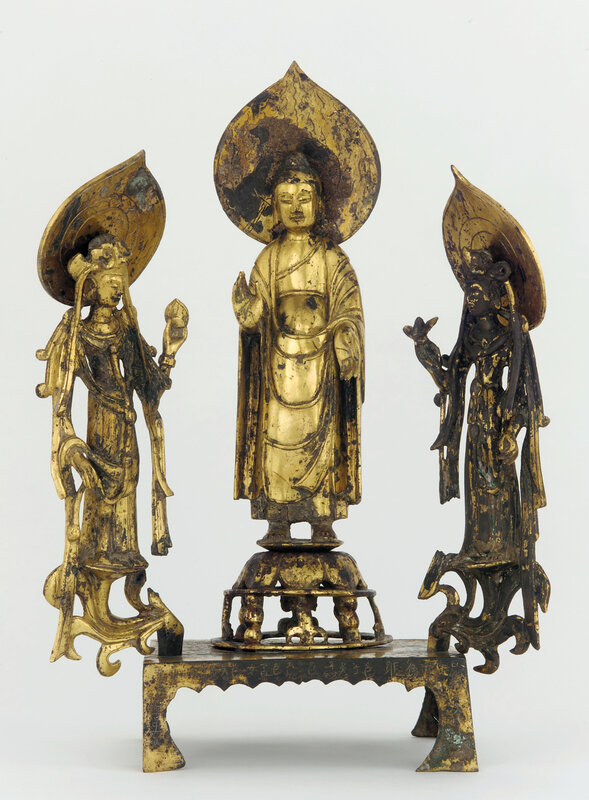
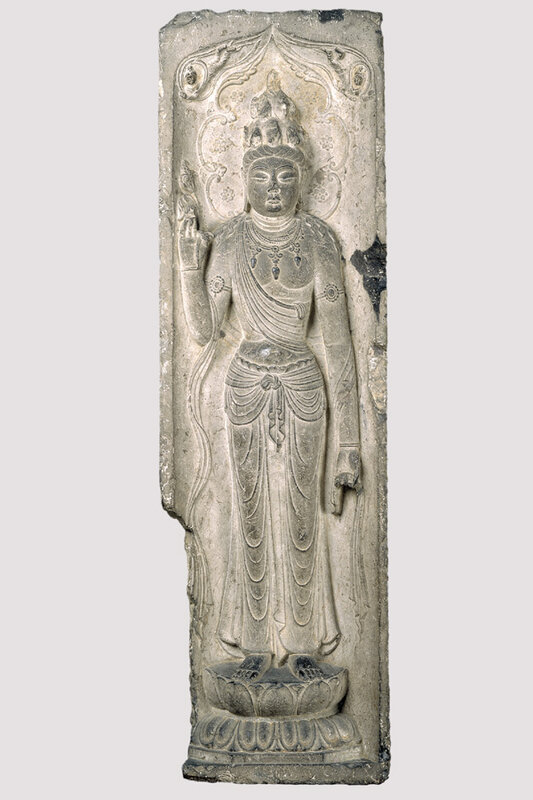

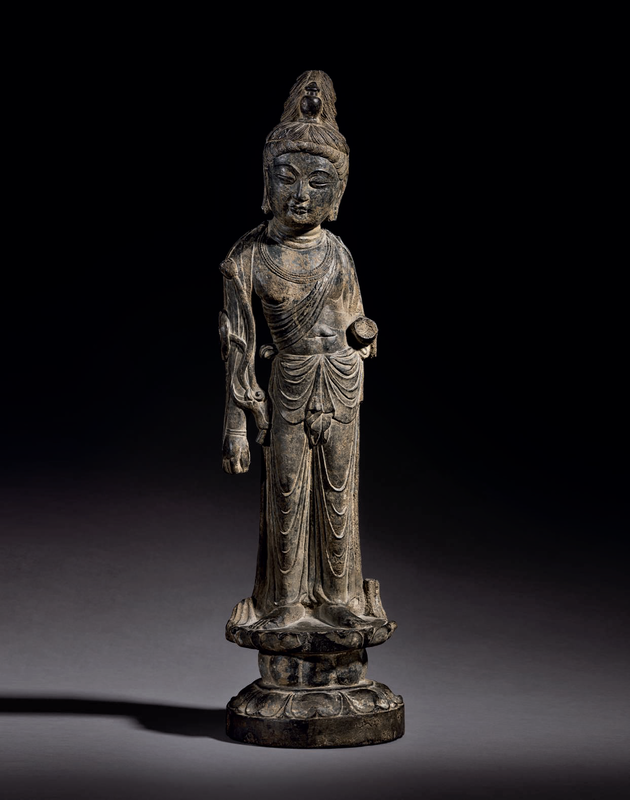
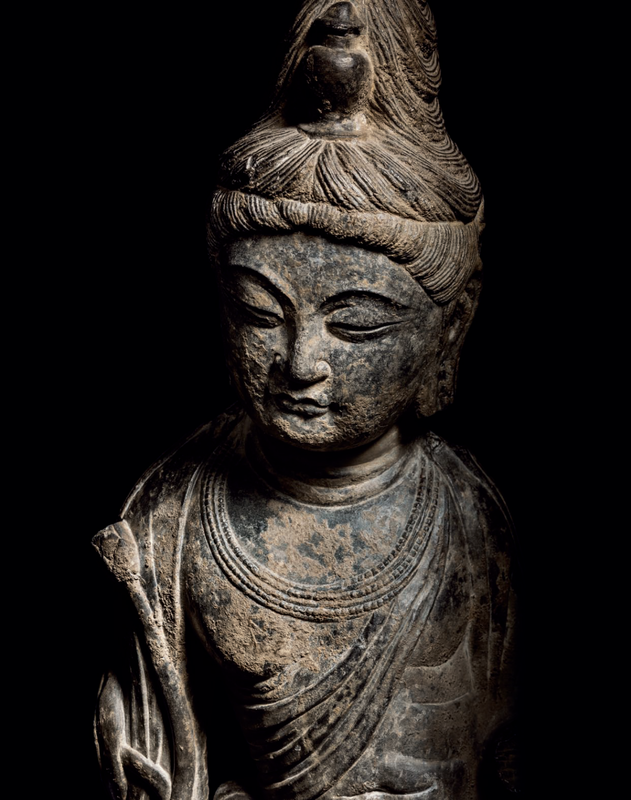
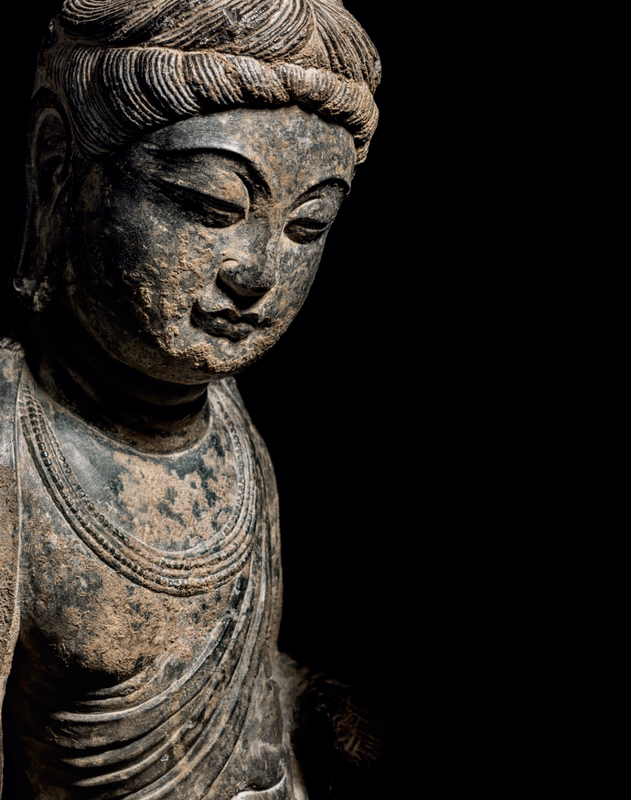


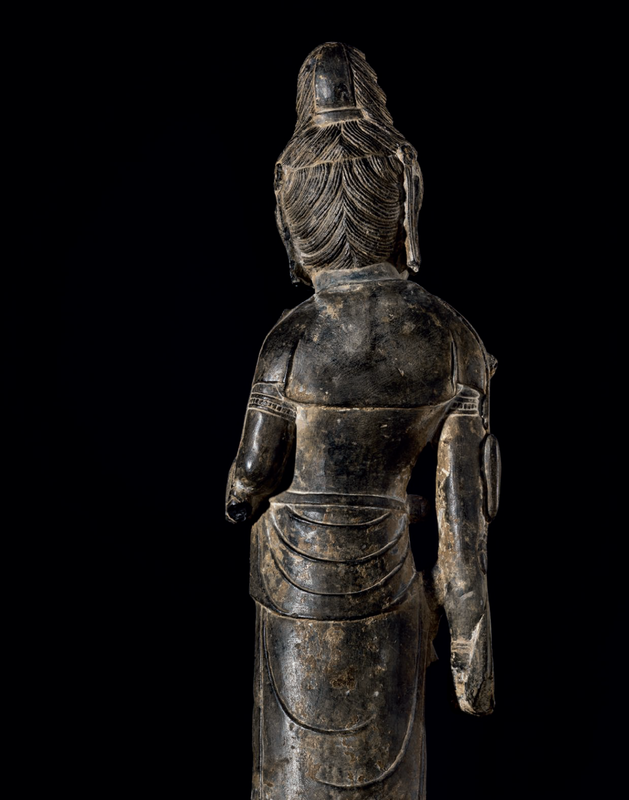
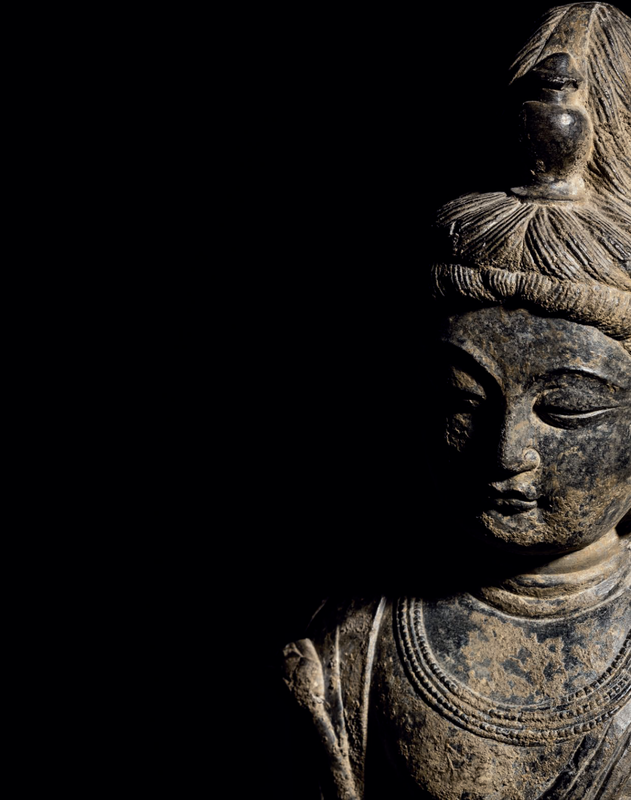
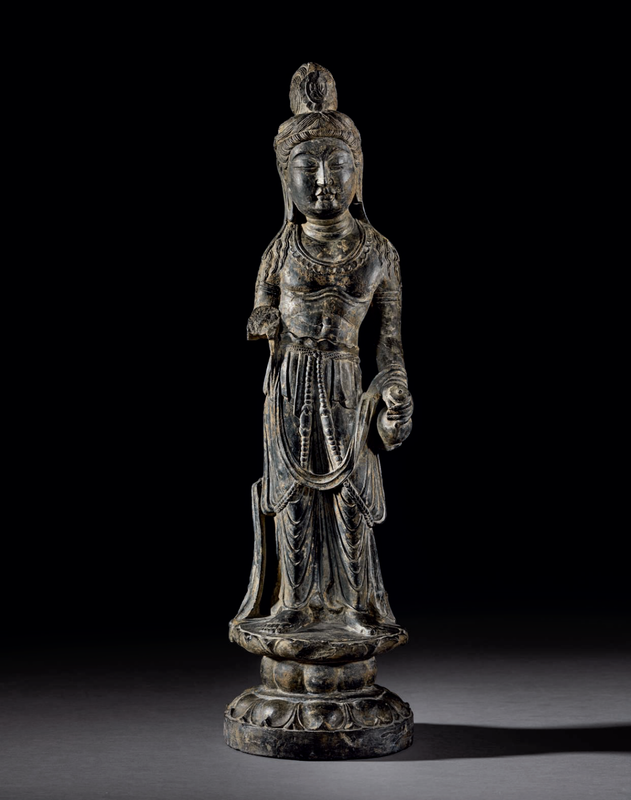



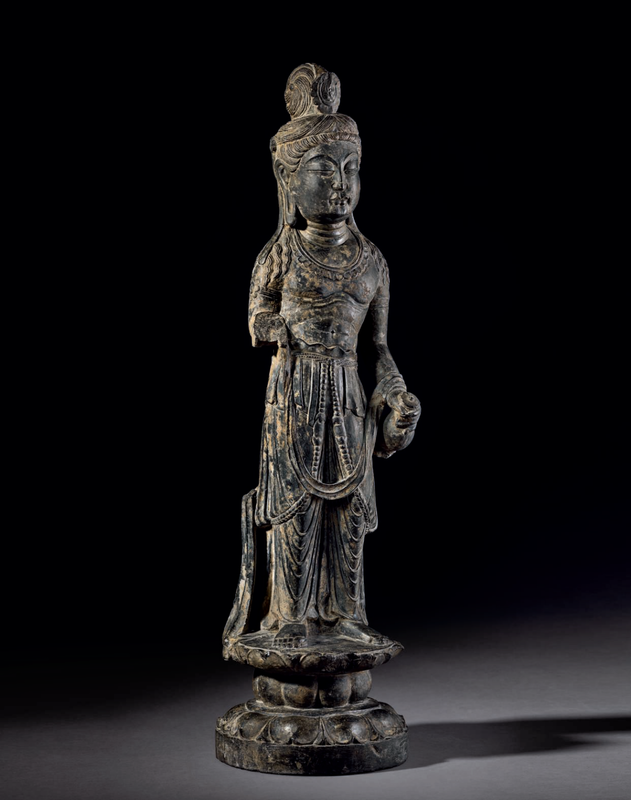



/http%3A%2F%2Fstorage.canalblog.com%2F60%2F34%2F119589%2F128961949_o.png)
/http%3A%2F%2Fstorage.canalblog.com%2F86%2F66%2F119589%2F127785780_o.jpg)
/http%3A%2F%2Fstorage.canalblog.com%2F42%2F73%2F119589%2F127764918_o.jpg)
/http%3A%2F%2Fstorage.canalblog.com%2F33%2F71%2F119589%2F127160121_o.jpg)